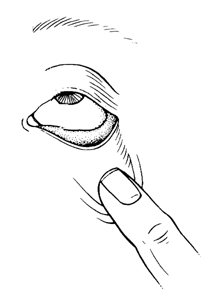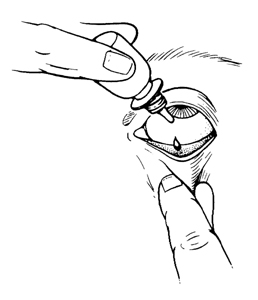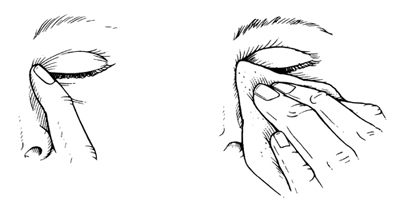When are eyedrops needed?
Infections, inflammation, glaucoma, and many other eye disorders are often treated with medicated eyedrops.
Side effects of eyedrops
It is important to remember that all medicines can have side effects. Surprisingly, even a small amount of medication in an eyedrop can create significant side effects in other parts of the body. There are ways to decrease the absorption rate of the eyedrop into the system and to increase the time the eyedrop is on the eye, making the medicine safer and more effective.
How to instill eyedrops
Instilling eyedrops may seem difficult at first, but it becomes easier with practice. To place an eyedrop in your eye, first tilt back your head. Then create a “pocket” in front of the eye by pulling down on the lower lid with an index finger or by gently pinching the lower lid outward with the thumb and index finger. Let the drop fall into the pocket without touching the dropper tip to your eye, eyelid, or fingers, to prevent contaminating the bottle.


Immediately after instilling the drop, gently press on the inside corner of the eyelids, next to the bridge of your nose, for two to three minutes with your forefinger or thumb (nasolacrimal duct compression). It is essential not to blink at all before pressing on the corner of your eyelids, as blinking pushes the medication into your tear ducts and the rest of your body. Alternatively, you can keep your eyes closed for three to five minutes after instilling eyedrops instead of pressing on your nasolacrimal duct. Again, it is essential not to blink at all; close your eye and keep it closed.

Before opening your eyes, dab unabsorbed drops and tears from the closed lids with a tissue.
Wait at least five minutes between different drops
If you are taking two different types of eyedrops, wait at least five minutes before instilling the second drop. Because the volume of a single drop exceeds the capacity of the surface of the eye, it serves no purpose to use two drops at the same time.
© 2025, 2020 The American Academy of Ophthalmology
